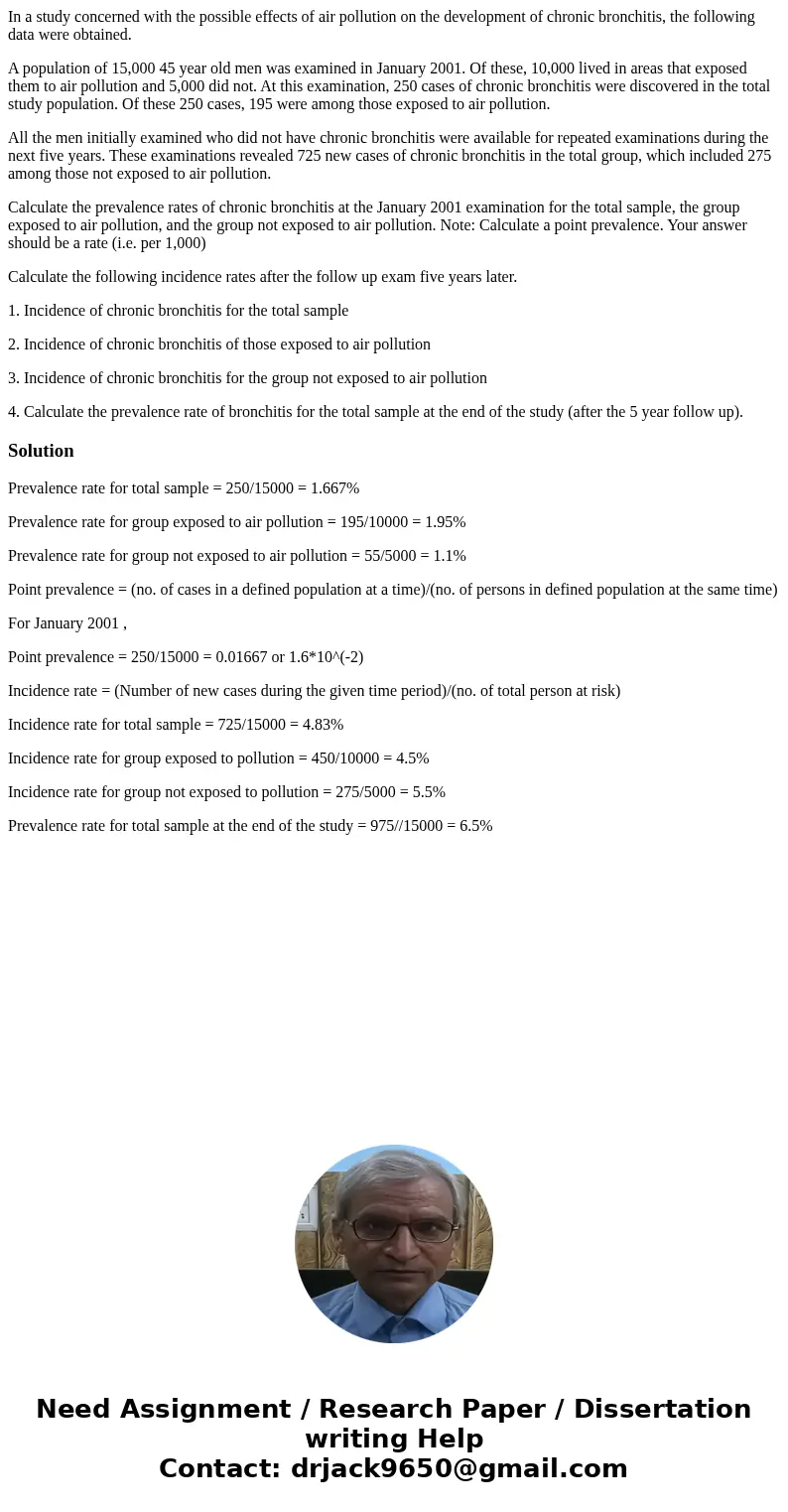In a study concerned with the possible effects of air pollut
In a study concerned with the possible effects of air pollution on the development of chronic bronchitis, the following data were obtained.
A population of 15,000 45 year old men was examined in January 2001. Of these, 10,000 lived in areas that exposed them to air pollution and 5,000 did not. At this examination, 250 cases of chronic bronchitis were discovered in the total study population. Of these 250 cases, 195 were among those exposed to air pollution.
All the men initially examined who did not have chronic bronchitis were available for repeated examinations during the next five years. These examinations revealed 725 new cases of chronic bronchitis in the total group, which included 275 among those not exposed to air pollution.
Calculate the prevalence rates of chronic bronchitis at the January 2001 examination for the total sample, the group exposed to air pollution, and the group not exposed to air pollution. Note: Calculate a point prevalence. Your answer should be a rate (i.e. per 1,000)
Calculate the following incidence rates after the follow up exam five years later.
1. Incidence of chronic bronchitis for the total sample
2. Incidence of chronic bronchitis of those exposed to air pollution
3. Incidence of chronic bronchitis for the group not exposed to air pollution
4. Calculate the prevalence rate of bronchitis for the total sample at the end of the study (after the 5 year follow up).
Solution
Prevalence rate for total sample = 250/15000 = 1.667%
Prevalence rate for group exposed to air pollution = 195/10000 = 1.95%
Prevalence rate for group not exposed to air pollution = 55/5000 = 1.1%
Point prevalence = (no. of cases in a defined population at a time)/(no. of persons in defined population at the same time)
For January 2001 ,
Point prevalence = 250/15000 = 0.01667 or 1.6*10^(-2)
Incidence rate = (Number of new cases during the given time period)/(no. of total person at risk)
Incidence rate for total sample = 725/15000 = 4.83%
Incidence rate for group exposed to pollution = 450/10000 = 4.5%
Incidence rate for group not exposed to pollution = 275/5000 = 5.5%
Prevalence rate for total sample at the end of the study = 975//15000 = 6.5%

 Homework Sourse
Homework Sourse